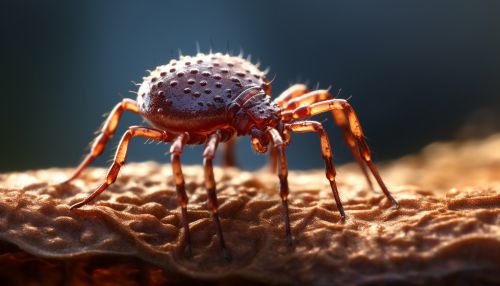Parasitism
Introduction
Parasitism is a type of symbiosis where one organism, the parasite, benefits at the expense of the host. This non-mutual relationship differs from other forms of symbiosis, such as mutualism and commensalism, where both or one of the organisms benefit, respectively. Parasites can be of various types, including endoparasites (inside the host) and ectoparasites (outside the host), and can range from viruses and bacteria to plants and animals.


Types of Parasites
Parasites are typically classified into three main types: ectoparasites, endoparasites, and mesoparasites.
Ectoparasites
Ectoparasites live on the surface of their host. They include lice, ticks, mites, and fleas. These parasites have evolved to attach firmly to their host, often causing discomfort and transmitting diseases.
Endoparasites
Endoparasites live inside the host’s body. They can inhabit various parts of the host, such as the blood, tissues, and organs. Examples of endoparasites include tapeworms, flukes, and heartworms.
Mesoparasites
Mesoparasites enter their hosts intermittently. They are neither strictly ectoparasites nor endoparasites. Examples include certain types of flies and mosquitoes.
Parasite Life Cycles
Parasites have complex life cycles involving a series of developmental stages. These stages often include multiple hosts, each necessary for completing the parasite's life cycle.
Direct Life Cycle
In a direct life cycle, the parasite does not require an intermediate host. The eggs or larvae are released into the environment, where they can directly infect a new host. An example of a parasite with a direct life cycle is the human roundworm, Ascaris lumbricoides.
Indirect Life Cycle
In an indirect life cycle, the parasite requires one or more intermediate hosts in addition to the primary host. The intermediate hosts are usually necessary for the parasite to undergo certain developmental stages before it can infect the primary host. An example of a parasite with an indirect life cycle is the human liver fluke, Clonorchis sinensis.
Parasite-Host Interactions
Parasite-host interactions are complex and can involve a range of biological and ecological processes. These interactions can influence the evolution of both the parasite and the host.
Parasite Transmission
Parasites are transmitted in a variety of ways, including through direct contact, ingestion of contaminated food or water, or via vectors such as mosquitoes.
Parasite Virulence
Parasite virulence, or the degree of harm caused to the host, can vary widely. Some parasites cause severe disease and even death, while others may have little noticeable effect on the host.
Host Resistance
Hosts can develop resistance to parasites through various mechanisms, including the immune response and behavioral changes. Resistance can reduce the impact of parasitism on the host, but it can also lead to an evolutionary arms race between the host and the parasite.
Impact of Parasitism
Parasitism can have significant impacts on individual hosts and populations, ecosystems, and human societies.
Impact on Hosts and Populations
Parasitism can cause a range of negative effects on hosts, from minor discomfort to severe illness or death. It can also influence host populations by affecting growth rates, population size, and the genetic diversity.
Impact on Ecosystems
Parasites can play important roles in ecosystems, influencing community structure and biodiversity. They can also affect the flow of energy and nutrients in ecosystems.
Impact on Human Societies
Parasites have a significant impact on human societies, causing a range of diseases and economic losses. Parasitic diseases, such as malaria and schistosomiasis, are major public health problems in many parts of the world.
